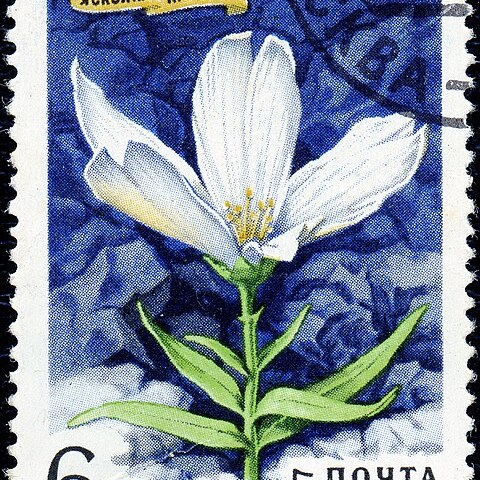Plants perennial, subrhizomatous. Stems simple, or few together, erect or ascending, 20-70 cm, proximal internodes moderately pilose, becoming glandular distally; nonflowering, axillary branches usually present; small axillary tufts of leaves absent. Leaves sessile, not marcescent; blade narrowly lanceolate, with prominent midrib, 0.2-1 × 3-12 mm, apex acuminate, ± pubescent on both surfaces, short-ciliate. Inflorescences open or congested, usually 3-10-flowered cymes; bracts normally lanceolate, acuminate, herbaceous, pubescent. Pedicels erect, 2-25(-60) mm, usually ca. 2 times as long as sepals in fruit, glandular-pubescent. Flowers large, conspicuous, more than 2 cm diam.; sepals lanceolate, 8-11(-12) mm, outer sepal margins herbaceous, inner sepal margins narrow, membranous, apex acute, moderately to sparsely glandular-hairy; petals obovate, (15-)18-25 mm, at least 2 times as long as sepals, apex deeply 2-fid; stamens 10; styles 5. Capsules narrowly conic, straight, 15-22 mm, ca. 2 times as long as sepals; teeth 10, erect, short, becoming outwardly coiled. Seeds yellowish brown, round, 2-2.5 mm diam., finely rugose in concentric rings; testa not inflated. 2n = 38.
More
Herbs perennial, 20--40 cm tall, tomentellous, distally glandular pubescent. Stems simple, erect. Leaves linear-lanceolate to lanceolate, 4--8 × 0.5--1.5 cm, apex acuminate. Cyme terminal; bracts leaflike. Pedicel glandular hairy. Sepals oblong-ovate or ovate, 6--10 × 3--4 mm, glandular pubescent, margin membranous, apex obtuse. Petals obcordate, 2--3 × as long as sepals, apex crenately 2-lobed. Styles 5. Capsule conical, straight, 1.5--2 × as long as calyx, teeth revolute. Seeds brown, ca. 2 mm, obtusely tuberculate. Fl. Jun--Jul, fr. Aug--Sep.

